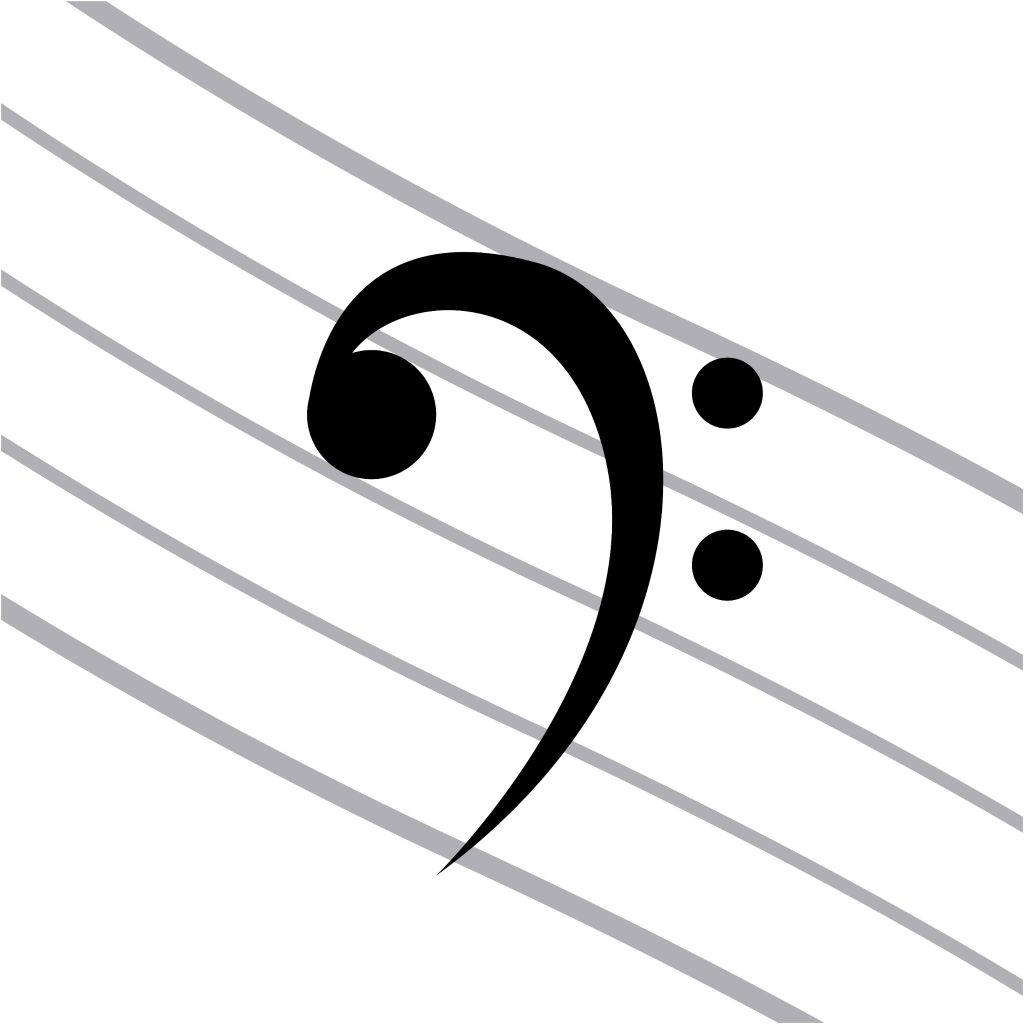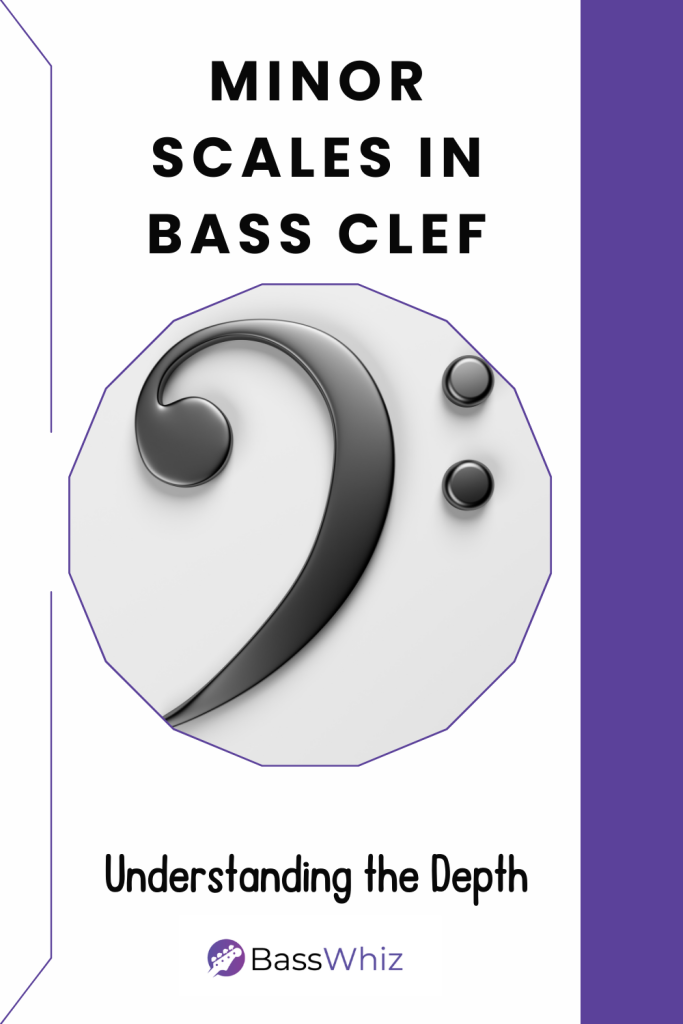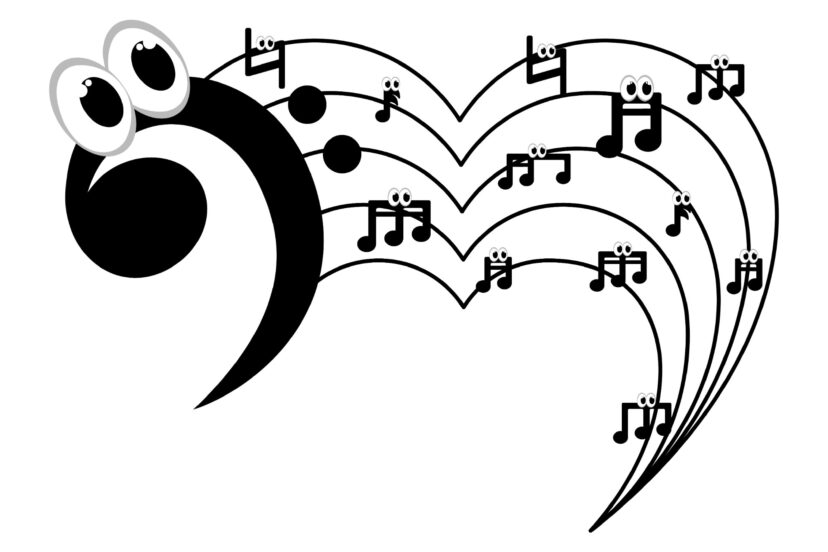Minor scales in bass clef: Understanding the Depth
Understanding Minor Scales in Bass Clef
I’m sure you are ready to take your knowledge of minor scales on the bass guitar to the next level. In this post I want to guide you through the ins and outs of minor scales in bass clef. From understanding the principles behind minor scales to mastering their execution on the bass guitar. Get ready to dive into the world of minor scales and unlock new possibilities in your bass playing.
Introduction: Understanding the Basics of Minor Scales in Bass Clef
When it comes to understanding minor scales in bass clef, it’s important to start with the basics. Once I understood its significance, it was like discovering a new language. Minor scales are essential for adding depth and emotion to your bass guitar playing. In this section, we will explore the fundamental principles behind minor scales in bass clef, including the unique intervals and patterns that create their distinctive sound. The bass clef gives a foundational structure to any composition, providing the undercurrent and support. By grasping these basics, you’ll be on your way to unlocking the full potential of minor scales on the bass guitar.
Why Focus on the Emotional Depth of Minor Scales
Have you ever wondered why some songs tug at your heartstrings? More often than not, it’s the minor scales doing their magic. They have a knack for evoking deep emotions – melancholy, introspection, and sometimes, a serene kind of happiness.
How to Form Natural Minor Scales
To form natural minor scales in bass clef, you need to understand the unique patterns and intervals that create their distinctive sound. Start with the root note and follow the formula of whole and half steps to build the scale. For example, in the key of A minor, start on A and play A, B, C, D, E, F, and G. Remember to apply accidentals as needed to maintain the correct intervals. Practicing this process in different keys will help you internalize the formation of natural minor scales and enhance your bass playing abilities.

Types of Minor Scales
If you’ve ever felt overwhelmed with all the minor scales out there, I’ve been there. But don’t worry, we’ll break them down one by one.
Harmonic and Melodic Minor Scales in Bass Clef
Harmonic and melodic minor scales add a touch of complexity and richness to your bass playing. In the harmonic minor scale, the seventh note is raised by a half step, creating a unique tension and exotic sound. The melodic minor scale, on the other hand, raises the sixth and seventh notes when ascending, but reverts to the natural minor scale when descending. These scales open up a whole new world of possibilities and can be used to evoke different moods and emotions in your bass playing. So don’t be afraid to experiment and incorporate harmonic and melodic minor scales into your repertoire!
The Relative Major and Parallel Major Scales in Bass Clef
Now that we’ve explored the world of minor scales in bass clef, let’s take a moment to discuss their relationship to the major scales. The relative major scale of a minor scale shares the same key signature and starting note, but with a different tonic. For example, the relative major of A minor is C major. On the other hand, the parallel major scale of a minor scale has the same tonic, but with a different key signature. For example, the parallel major of A minor is A major. Understanding these relationships can help you navigate between major and minor scales and expand your bass playing horizons. So go ahead and experiment with the relative and parallel major scales in bass clef!
Key Signatures to Watch Out For
Each minor scale has a cousin major scale, and understanding these relationships can be super helpful. Remember the Circle of Fifths? It’s your best friend and something you need to understand.

Tips for Practicing and Memorizing Minor Scales in Bass Clef
Once you’ve learned the basics of minor scales in bass clef, it’s time to put that knowledge into practice! Here are some helpful tips for practicing and memorizing minor scales in bass clef. First, start by practicing each minor scale slowly and gradually increase your speed as you become more comfortable. Next, try playing the scales in different patterns and variations to challenge yourself. Additionally, using mnemonic devices, such as catchy phrases or acronyms, can help you remember the notes in each scale. Finally, make sure to practice regularly and incorporate minor scales into your warm-up routine. With these tips, you’ll be well on your way to mastering minor scales in bass clef!
Conclusion & Final Thoughts
Incorporating minor scales into your daily practice can work wonders. Start slow, use a metronome, and gradually increase the pace. Diving deep into minor scales in bass clef has been very valuable for me – full of discoveries and epiphanies. And remember, it’s not about perfection but the joy of learning and expressing.
Frequently Asked Questions
What’s the difference between bass and treble clef?
While the bass clef caters to lower notes, the treble clef covers higher pitches.
How can I improve my finger speed for scales?
Practice, practice, practice! Metronomes and dedicated finger exercises can help.
Why do some compositions use both major and minor scales?
To add depth, contrast, and variety to the musical piece.
Are minor scales harder to play?
Not necessarily. It depends on your practice and familiarity.
Can I compose a piece using only minor scales?
Absolutely! It might have a melancholic or intense feel, but that could be the exact emotion you want to convey.




